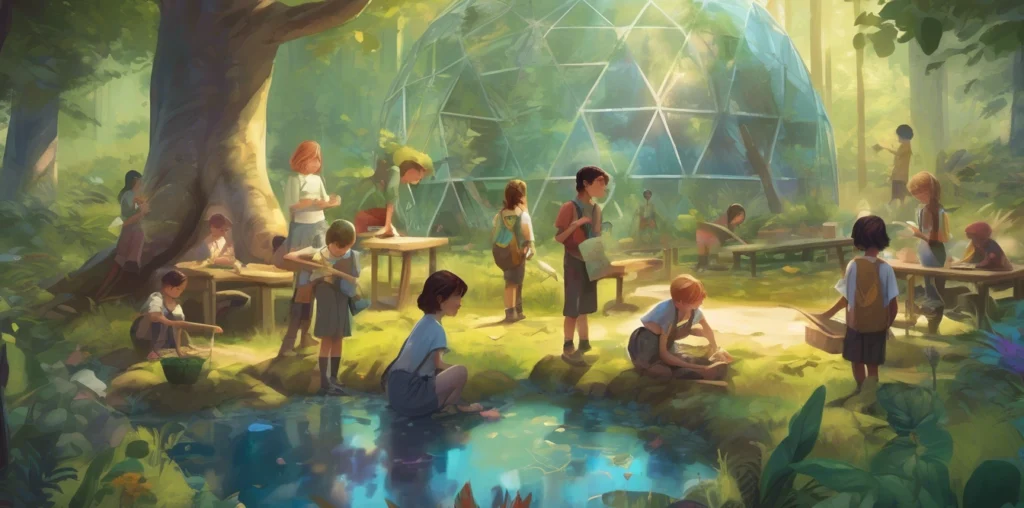Every April, the question was no longer, “Did you pass your test?” It was, “What did the forest teach you today?”
Standardized testing? Long gone. Replaced with boots-on-the-ground, hands-in-the-soil learning. Earth School meant students learned biology by planting real gardens, studied chemistry through natural dyes, and discussed history while restoring native wetlands with their elders.
Learning took place under open skies and within AI-assisted geodesic domes where holograms showed ecosystems evolving in real-time. Kids tracked bees with smart lenses and debated climate ethics around solar-powered campfires.
Every student developed a “stewardship project,” not a resume. They might reintroduce butterflies to an urban corridor or design an irrigation system powered by captured fog. And yes, they still learned math—only now, it was taught by calculating rainfall, budgeting solar storage, or mapping tree rings.
Collaboration replaced competition. Wisdom came from neighbors, indigenous leaders, and the land itself.
The result? A generation that knew how to fix things, feed people, and ask the right questions.
Education stopped being a pipeline to economic survival and started becoming a passport to stewardship, empathy, and wonder. It was messy. It was muddy. And it was the best education system humanity had ever known.

